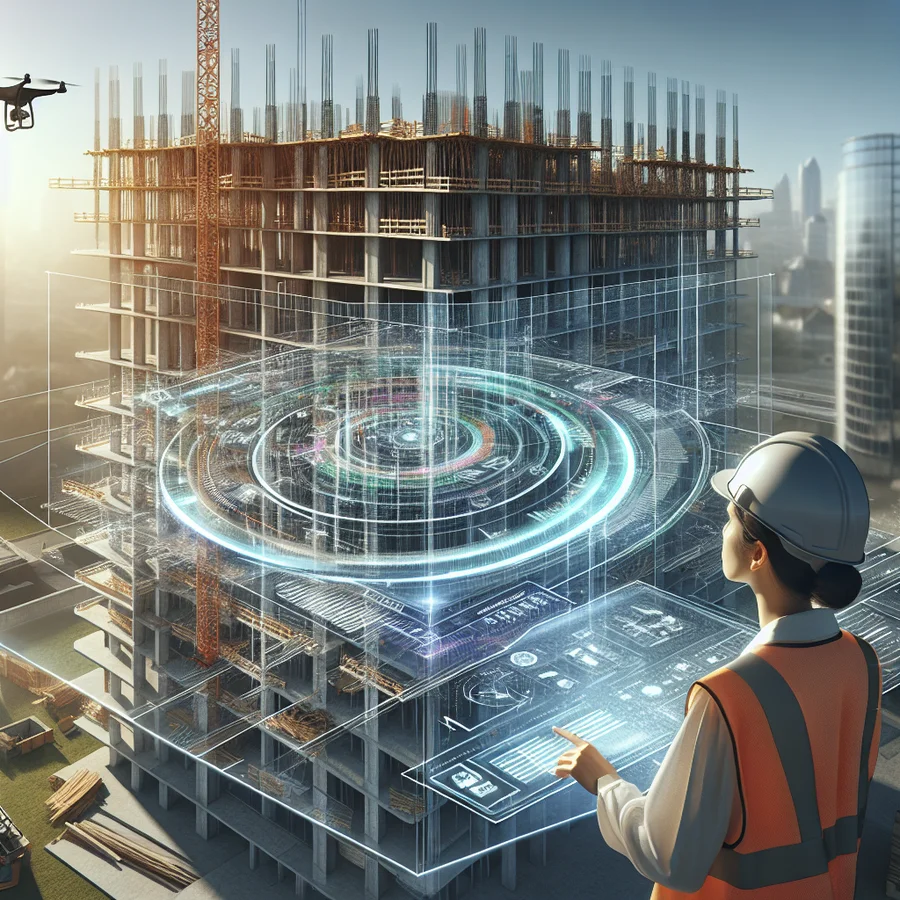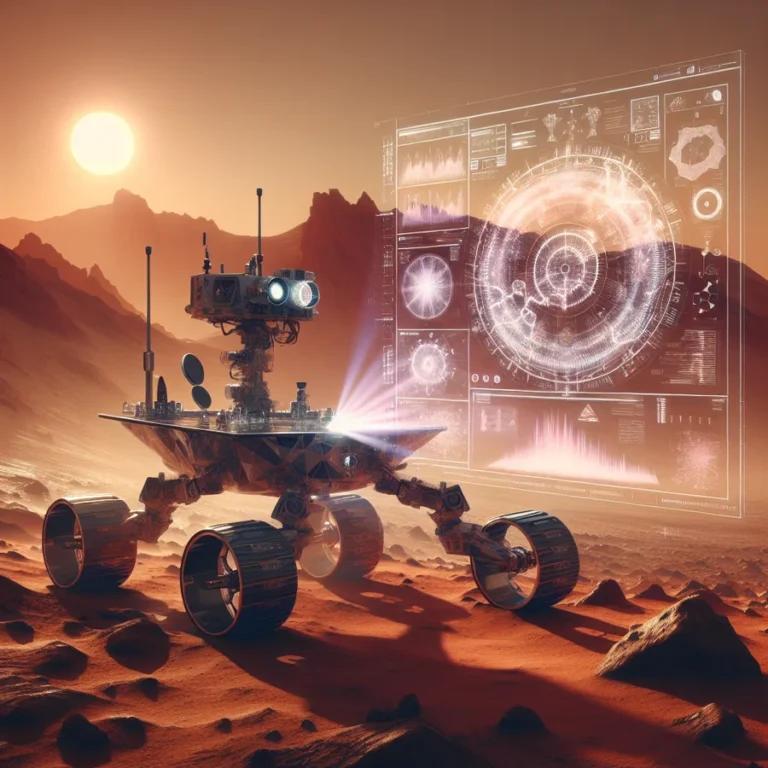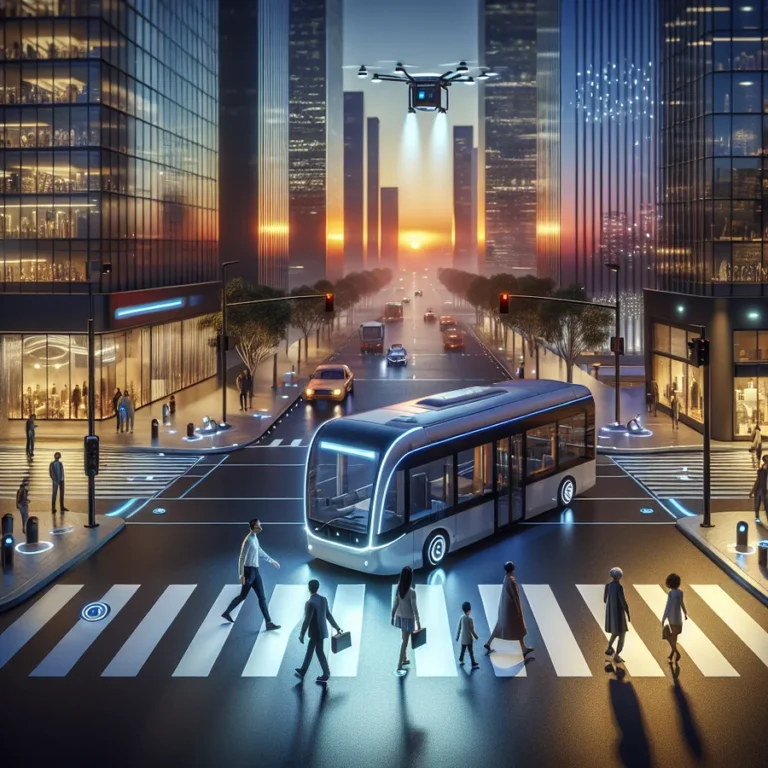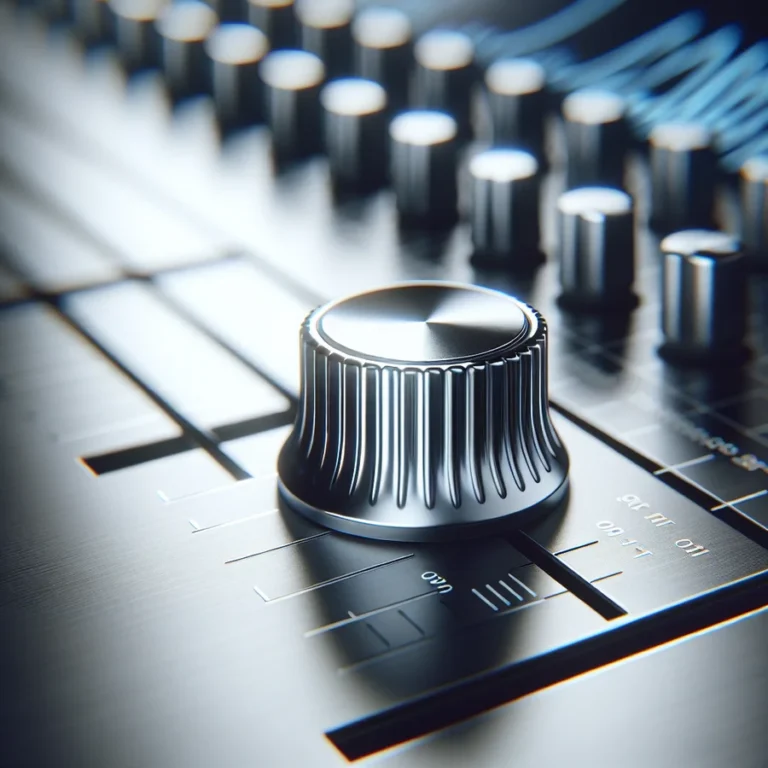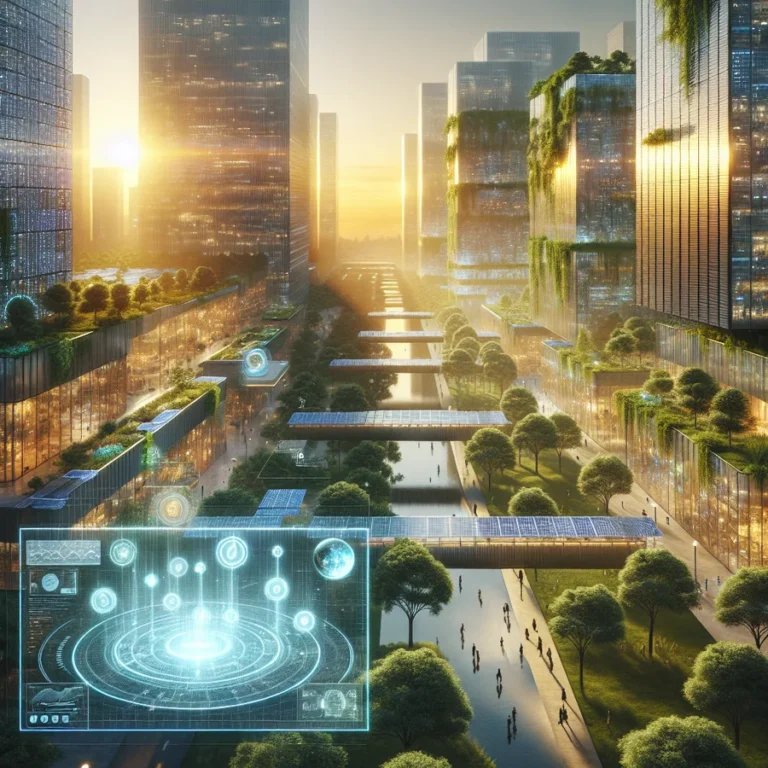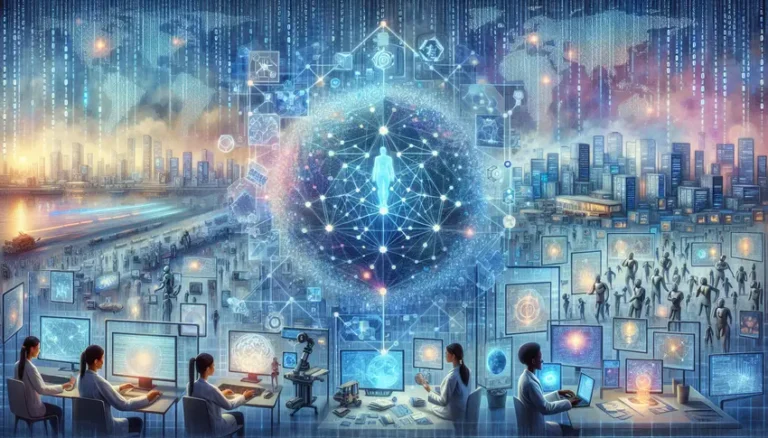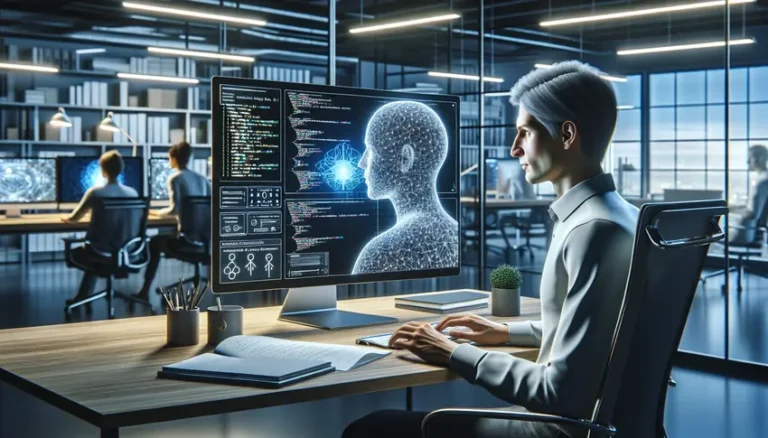AI in Construction: Enhancing Design and Streamlining Processes
The construction industry is undergoing a significant transformation. Artificial intelligence (AI) is at the forefront, revolutionizing how projects are designed, planned, and executed. This guide explores how AI in construction enhances efficiency, reduces costs, and improves safety across the board.
From optimizing designs to streamlining workflows, AI offers unprecedented capabilities. It empowers construction professionals to make data-driven decisions, minimize risks, and achieve sustainable outcomes. Let’s dive into the exciting world of AI in construction and discover its transformative potential.
Understanding the Role of AI in Construction
AI is no longer a futuristic concept; it’s a present-day reality in construction. It encompasses a range of technologies that enable machines to perform tasks that typically require human intelligence. This includes learning, problem-solving, and decision-making.
In construction, AI manifests in various forms. These include:
- Machine Learning: Algorithms that allow systems to learn from data without explicit programming.
- Computer Vision: AI that enables machines to “see” and interpret images, useful for site monitoring and safety.
- Predictive Analytics: Using data to forecast future outcomes, such as potential project delays or equipment failures.
- Generative AI: Creating new designs, plans, or schedules based on specified parameters and constraints.
These technologies are reshaping the construction landscape, offering solutions to long-standing challenges and driving innovation.
How AI is Enhancing Construction Design
Design is a critical phase in any construction project. AI is making significant strides in enhancing design accuracy, efficiency, and sustainability. Let’s explore the key applications.
Generative Design: Unleashing Creativity with AI
Generative design uses AI algorithms to create multiple design options based on specific parameters. Architects input constraints like spatial requirements, materials, budget, and aesthetic preferences. The AI then generates a variety of design options that meet these criteria.
This approach allows architects to explore a broader range of possibilities in a shorter amount of time. It also encourages innovative solutions that might not have been considered through traditional design processes. By leveraging AI’s computational power, architects can push the boundaries of creativity and develop unique, optimized designs.
Example: Imagine designing a bridge. With generative design, you can specify the load requirements, material options, and environmental conditions. The AI will then generate hundreds of bridge designs, each optimized for different factors like cost, strength, or aesthetics.
AI-Powered Building Information Modeling (BIM)
Building Information Modeling (BIM) is a digital representation of a building’s physical and functional characteristics. AI enhances BIM by making it more intelligent and predictive.
AI algorithms can analyze BIM data to identify design clashes, optimize building performance, and simulate various scenarios to predict outcomes. For instance, AI can simulate the impact of different materials on a building’s energy efficiency. This helps architects make informed decisions about materials and design choices.
Reminder: Integrating AI with BIM allows professionals to create more accurate, efficient, and sustainable buildings.
Optimizing Material Selection with AI
Choosing the right materials is crucial for any construction project. AI can assist in selecting the most appropriate materials, focusing not only on cost and performance but also on sustainability.
AI algorithms can analyze a material’s lifecycle, from production to disposal, recommending options with the lowest environmental impact. This promotes the use of eco-friendly materials and enhances long-term sustainability.
Note: Buildings constructed with sustainable materials often have lower maintenance needs and better energy efficiency, contributing to the structure’s overall lifecycle sustainability.
Streamlining Construction Processes with AI
Beyond design, AI is transforming various construction processes, making them more efficient, safer, and cost-effective. Here’s how:
AI in Project Planning and Management
AI-powered tools can analyze project data, identify potential risks, and suggest strategies to mitigate them. This proactive approach helps in minimizing delays, cost overruns, and other common challenges in construction projects.
For example, AI algorithms can predict equipment failures by analyzing historical data and current usage patterns. This allows construction managers to schedule maintenance activities before a breakdown occurs, reducing downtime and ensuring smoother project progression. Additionally, AI can optimize resource allocation by predicting labor and material requirements, thereby improving overall project efficiency.
Key Benefit: AI-driven scheduling algorithms consider resource availability and potential complications to create realistic project timelines.
Enhancing Site Safety with AI
Construction sites are inherently hazardous environments. AI is playing a crucial role in enhancing safety through real-time hazard detection, wearable technologies, and proactive monitoring.
AI-powered cameras and video analytics can detect potential hazards, monitor on-site behavior, and provide real-time alerts. Wearable technologies, like smart helmets and vests, monitor worker behaviors and environmental conditions, providing immediate feedback and alerts.
Example: AI systems can analyze historical safety data to predict and prevent accidents before they occur. This proactive approach ensures that construction firms can address potential issues well before they become critical, significantly reducing the risk of injury.
AI-Powered Resource Allocation
Efficient resource allocation is vital for project success. AI tools can efficiently distribute manpower, equipment, and materials, ensuring that resources are utilized optimally while minimizing waste.
These tools analyze historical data and real-time factors, such as weather conditions and material availability, to create precise and adaptable project timelines. This ensures better allocation of resources like manpower, equipment, and materials, minimizing waste and maximizing value.
Reminder: Optimized resource utilization leads to significant cost savings and improved project timelines.
AI in Construction: Predictive Maintenance
Equipment downtime can significantly impact project timelines and budgets. AI-driven predictive maintenance ensures that construction equipment is maintained in optimal condition, reducing the likelihood of malfunctions that can lead to material waste.
By predicting when equipment will require maintenance, AI-driven systems can prevent breakdowns and extend the lifespan of construction machinery. This not only reduces the need for repairs and replacements but also minimizes the waste generated by equipment failures.
Key Benefit: Well-maintained equipment operates more efficiently, reducing the risk of errors and accidents that can lead to material waste.
AI-Driven Waste Reduction and Recycling
The construction industry generates a significant amount of waste. AI is offering innovative solutions to manage and reduce waste effectively, promoting environmental sustainability and operational efficiency.
AI tools can provide predictive analytics for material usage, forecasting the exact requirements based on project scope and historical data. This reduces overordering, a common cause of material wastage. AI-driven automation is also transforming waste sorting and recycling on construction sites, efficiently separating materials and increasing the amount that can be recycled.
Example: AI systems can monitor and analyze different waste streams, providing detailed data on the types and quantities of waste being produced. This information is crucial for identifying areas where waste reduction efforts can be improved.
The Benefits of Implementing AI in Construction Projects
Integrating AI into construction projects provides significant advantages, addressing long-standing inefficiencies and driving better outcomes. These benefits extend across every phase of construction, from planning and design to execution and post-project analysis.
- Enhanced Design Accuracy: Generative AI improves the precision of construction designs by analyzing complex variables and creating optimized solutions tailored to project goals.
- Improved Cost Management: AI tools provide detailed cost estimations, helping teams identify areas for savings while maintaining quality standards.
- Increased Productivity: By automating repetitive tasks, generative AI allows construction teams to focus on higher-value activities, streamlining operations and improving efficiency.
- Optimized Resource Utilization: Generative AI ensures better allocation of resources like manpower, equipment, and materials, minimizing waste and maximizing value.
- Proactive Risk Mitigation: Advanced AI platforms simulate potential risks, enabling teams to implement preemptive safety measures and reduce project delays.
- Sustainability Gains: AI solutions prioritize eco-friendly practices, such as reducing material waste and optimizing energy efficiency in building designs.
These benefits are not only operational but also strategic, positioning construction companies to meet modern demands for efficiency and sustainability.
Challenges and Considerations for Adopting AI in Construction
While AI offers tremendous potential, its adoption in construction comes with certain challenges and considerations. Addressing these proactively is crucial for successful implementation and long-term integration.
- High Initial Investment: Adopting AI often requires significant upfront costs, including purchasing software, upgrading hardware, and training staff.
- Data Dependency: AI systems rely heavily on high-quality, structured data. Ensuring data accuracy and completeness can be a significant hurdle.
- Change Management Issues: Resistance to change from employees and stakeholders can slow down AI adoption. Overcoming skepticism and fostering a culture of innovation requires targeted change management strategies.
- Integration Complexity: Incorporating AI into existing workflows and systems can be technically challenging. Compatibility issues with legacy systems and the need for customizations may complicate implementation.
- Regulatory and Ethical Concerns: The use of AI raises questions about compliance with industry regulations and ethical considerations, including data privacy and the impact on jobs.
- Skill Gaps: A lack of AI expertise within the workforce can hinder the effective use of AI tools. Bridging this skills gap requires investment in education and specialized training.
By addressing these considerations proactively, firms can create a roadmap for successful AI implementation that balances innovation with practicality.
Best Practices for Integrating AI in Construction Workflows
Successfully incorporating AI into construction workflows requires a structured approach. Following best practices can help construction companies use the full potential of AI technologies while minimizing disruptions.
- Develop a Clear Strategy: Define your organization’s objectives and key performance indicators (KPIs). Identify specific challenges or inefficiencies that AI can address.
- Engage Stakeholders Early: Involve project managers, architects, engineers, and on-site teams early in the AI integration process. Their input is crucial for aligning AI solutions with practical requirements.
- Invest in Training and Upskilling: Equip your workforce with the skills needed to use AI tools effectively. Comprehensive training programs ensure that employees understand how to interact with AI systems and leverage their outputs.
- Start Small with Pilot Projects: Begin with smaller, manageable pilot projects to test the effectiveness of AI solutions. These projects provide valuable insights into how AI tools perform in real-world scenarios.
- Ensure Data Quality and Accessibility: AI relies on high-quality data for optimal performance. Implement robust data management practices to ensure that the information feeding your AI systems is accurate, consistent, and up-to-date.
- Monitor and Refine Implementation: Continuous monitoring of AI workflows helps identify areas for improvement and ensures alignment with organizational goals. Regular performance reviews and stakeholder feedback loops allow for iterative refinement of AI solutions.
A methodical and collaborative approach ensures that AI not only addresses immediate challenges but also becomes a sustainable driver of innovation and efficiency in construction workflows.
The Future of AI in Construction
The future of AI in construction is poised to revolutionize the industry. Advanced design tools will enable architects and engineers to create optimized structures that prioritize sustainability, energy efficiency, and cost-effectiveness.
AI-powered automation on construction sites, from autonomous machinery to predictive maintenance systems, will improve precision and productivity while reducing waste and ensuring safer working conditions. The integration of digital twins and smart building technologies will further enhance project outcomes, allowing dynamic data adjustments throughout a building’s lifecycle.
Looking Ahead: Construction firms will need to focus on workforce adaptability, investing in reskilling and training initiatives to prepare employees for AI-focused roles. AI will not only optimize current practices but also open the door to entirely new possibilities, setting a benchmark for innovation and sustainability.
Conclusion
AI in construction is transforming the industry by enhancing design, streamlining processes, and improving safety. From generative design to predictive maintenance, AI offers a multitude of benefits that can lead to more efficient, sustainable, and cost-effective projects. While challenges exist, a strategic and collaborative approach can pave the way for successful AI integration.
Embracing AI is no longer a choice but a necessity for construction firms looking to stay competitive and shape the future of the built environment. By leveraging the power of AI, the construction industry can achieve greater operational efficiency and position itself as a leader in addressing modern challenges.
FAQs About AI in Construction
What is generative AI, and how does it apply to construction?
Generative AI refers to AI models that produce new, original content, such as design schematics, construction plans, or optimized schedules. In construction, it enhances efficiency, optimizes resources, and drives smarter decision-making by simulating multiple scenarios and offering optimized outcomes.
How does AI improve construction project timelines?
AI improves project timelines by forecasting delays, optimizing schedules, and automating scheduling and resource allocation. AI-driven scheduling algorithms consider resource availability and potential complications to create realistic project timelines.
Is AI cost-effective for small construction firms?
While the initial investment can be a barrier, AI can be cost-effective for small firms by improving efficiency, reducing waste, and optimizing resource allocation. Starting with smaller pilot projects can help manage costs and demonstrate the value of AI.
What role does AI play in sustainable construction practices?
AI plays a crucial role in promoting green building practices by optimizing building designs for energy efficiency, water conservation, and reduced carbon footprint. It can also assist in selecting sustainable materials and minimizing waste.
What challenges should firms expect when implementing AI?
Firms should expect challenges such as high initial investment, data dependency, change management issues, integration complexity, regulatory and ethical concerns, and skill gaps. Proactive planning and addressing these challenges are crucial for successful AI implementation.
